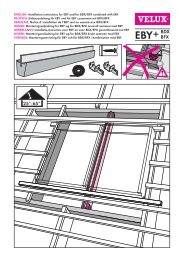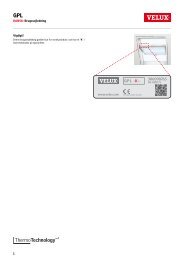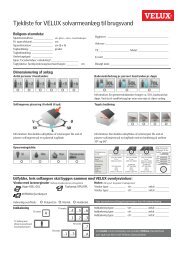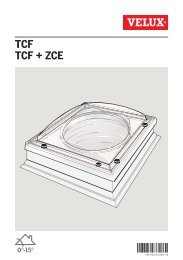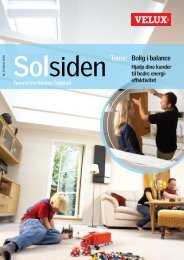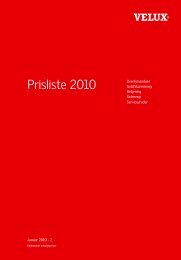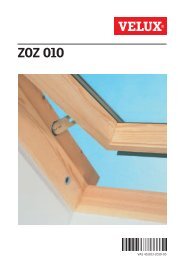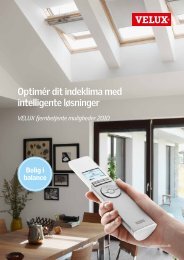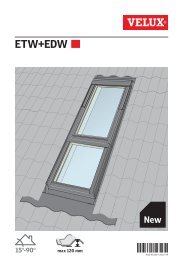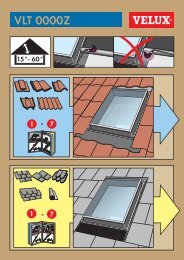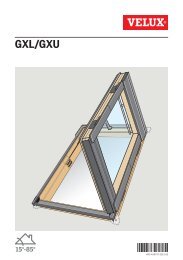Guldberg School - Velux
Guldberg School - Velux
Guldberg School - Velux
- No tags were found...
You also want an ePaper? Increase the reach of your titles
YUMPU automatically turns print PDFs into web optimized ePapers that Google loves.
EnergyTo reduce CO 2 emissions and optimise energyperformance, the building must be consideredas a whole, not just the sum of itscomponents.Energy efficiency needs to be incorporatedinto the very design of the building, and theavailable natural resources, such as sun andair, should be exploited to a maximum.For instance, windows should be consideredas energy contributors. They should beplaced strategically to allow for solar heatgain and optimum natural ventilation.A flexible building envelope will preventoverheating and possible glare in peakperiods, so the VELUX roof windows havebeen fitted with electrically operated awningblinds, controlled either by the users orby the fully automatic control system NVAdvance from WindowMaster.VELUX solar collectors can generally provideup to 70% of the energy required toproduce domestic hot water. If solar thermalcollectors were installed in every home inEurope, the saving could amount to some20,000,000 tons of oil – equivalent to taking20 million cars off the road every singleyear. The sun is the most powerful source ofenergy we have and we should make maximumuse of it.VELUX solar collectors will be integrated inthe south facing roof area of the <strong>Guldberg</strong>school for production of hot water (+ heatingof the basement).Intelligent houses of the future will be designedto control the indoor climate automatically:smart enough to know when toinsulate from cold, when to protect fromheat and when to provide ventilation.Heat loss(U-value)Heat gain(g-value)Energybalance(Eref)VELUX 9



